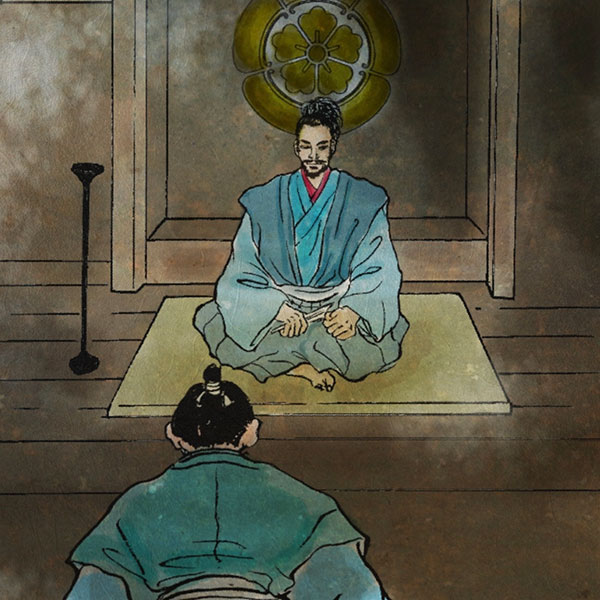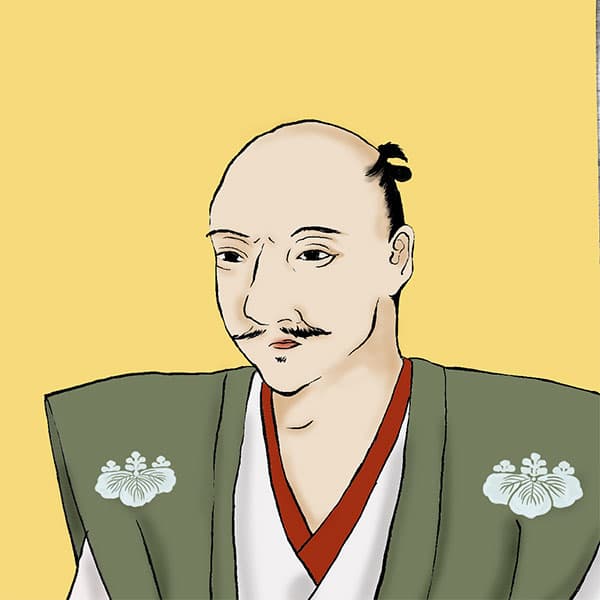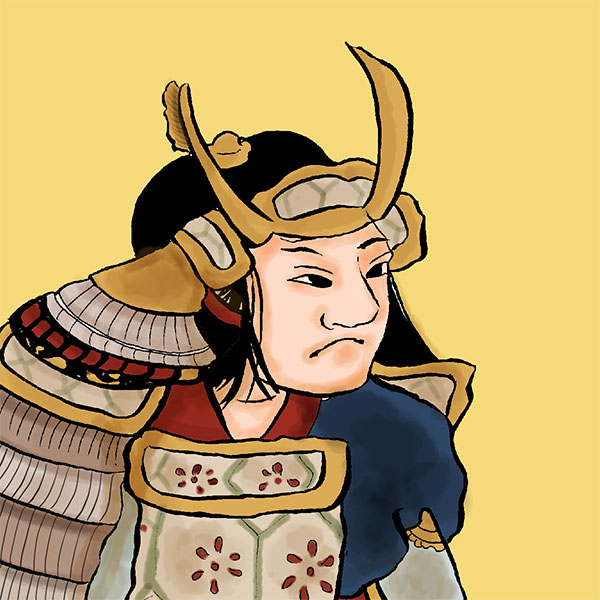Kiyosu Alliance (1/2)Oda Nobunaga and Tokugawa Ieyasu, an alliance that lasted about 20 years

Kiyosu Alliance
- Article category
- case file
- Incident name
- Kiyosu Alliance (1562)
- place
- Aichi prefecture
- Related castles, temples and shrines

Kiyosu Castle
- people involved
Oda Nobunaga and Tokugawa Ieyasu are known to have had a good relationship over a long period of time, despite the turbulent Sengoku period. The symbol of this is the Kiyosu Alliance, which was concluded between the two countries in 1562. This alliance, also known as the Oritoku Alliance, lasted for 20 years until Nobunaga's death in the Honnoji Incident, which was unusual during the Sengoku period. What exactly was the Kiyosu Alliance like? Why did Nobunaga and Ieyasu form an alliance in the first place? Let's take a closer look.
The relationship between Nobunaga and Ieyasu is that of “childhood friends”
Oda Nobunaga and Tokugawa Ieyasu are representative figures of the Sengoku period. It is said that the two had known each other since childhood, and were like childhood friends. Ieyasu was born on December 26, 1543, as the eldest son of Hirotada Matsudaira, the lord of Okazaki Castle. The Matsudaira clan was a local magnate from Mikawa Province (present-day central and eastern Aichi Prefecture) and was a vassal of Yoshimoto Imagawa at the time, making them enemies of the Oda clan. In 1545, Nobunaga's father, Nobuhide Oda, invaded Mikawa Province and asked for help from the Imagawa clan, but at this time, the Imagawa clan asked him to take hostages. For this reason, Ieyasu (then Takechiyo) was sent to Sunpu (central Shizuoka Prefecture) as a hostage. However, at Tahara Castle (Tahara City, Aichi Prefecture), where Ieyasu stopped on the way, he was betrayed by his vassals, and as a result, Ieyasu was sent to his enemy Nobuhide.
Hirotada Matsudaira's son was taken hostage, but he continued to serve the Imagawa clan without surrendering to the Oda clan. In recent years, a theory has also emerged that Hirotada actually surrendered to the Oda clan and offered Ieyasu as a hostage. For about two years, Ieyasu lived in Kato Junmori's mansion in Atsuta, Owari Province (Atsuta Ward, Nagoya City, Aichi Prefecture). It is said that at this time, Ieyasu met Oda Nobunaga when he was a boy, and they became childhood friends. Since the two were still young, there is no clear evidence from historical materials from the time, but it is clear that there was interaction between Junmori and Nobuhide, and there were opportunities for the two to meet face to face. That's probably true.
Later, in 1549, Ieyasu was defeated by Nobuhiro Oda, Oda Nobunaga's half-brother who was guarding Anjo Castle in Mikawa Province (Anjo City, Aichi Prefecture), and taken prisoner by the Imagawa army. , moved to Sunpu in the form of a hostage exchange with Nobuhiro. In 1555, he celebrated Genpuku in Sunpu and married Sena (later Tsukiyama-dono), the niece of Yoshimoto Imagawa. In this way, Ieyasu (then Motoyasu) came to live as a subordinate of Yoshimoto.
Ieyasu became independent after the Battle of Okehazama
In the 21st year of Tenbun (1552) (there are various theories such as the 20th year of Tenbun), Nobuhide Oda, who was competing with Yoshimoto Imagawa for Mikawa, died, and Nobunaga Oda, who won the succession dispute, succeeded him. Immediately after that, a skirmish between Nobunaga and Yoshimoto broke out. Then, in May 1560, the Battle of Okehazama occurred, where Nobunaga and Yoshimoto clashed.
Incidentally, at this time, Tokugawa Ieyasu participated in the battle as an advance corps of the Imagawa army, and played a major role in transporting provisions to Otaka Castle (Midori Ward, Nagoya City, Aichi Prefecture), the Imagawa Army's major base. However, Ieyasu did not participate in the decisive battle on May 19th, and was defending Otaka Castle. When Ieyasu learned in the evening that Yoshimoto had been killed, he hurriedly fled to Mikawa. On the way, when he arrived at Daijuji Temple, his family temple, he apparently considered suicide, but he was admonished by his subordinates and decided against it. Then, on May 23, after the Imagawa army withdrew from Okazaki Castle, he entered his home base and birthplace of Okazaki Castle (Okazaki City, Aichi Prefecture) for the first time in about 10 and a half years.
After that, Ieyasu used Okazaki Castle as his base and began to conquer the West Mikawa River. Furthermore, he extended his hand to Higashi Mikawa and became hostile to Ujima Imagawa, who succeeded Yoshimoto. Under these circumstances, Ieyasu decided to join hands with Nobunaga of Owari Province, the neighboring country to the west, in order to fight against the Imagawa clan, which ruled Totomi Province (west Shizuoka Prefecture) and Suruga Province to the east, and gain control of Mikawa. On the other hand, Nobunaga was also thinking of advancing into Mino (Gifu Prefecture), and since he was at war with the Saito clan, he did not want to antagonize Ieyasu. In this way, the two countries, which had previously been enemies, came to form an alliance.
Is the name “Kiyosu Alliance” incorrect? When was the alliance formed?
There are various theories as to when the Kiyosu Alliance was formed. According to the conventional wisdom, after the Battle of Okehazama, Tokugawa Ieyasu fought against Oda Nobunaga for a while, and then, along with Ujizane Imagawa, opposed the Oda clan, but was disappointed when Ujiyasu did not move. In response to Nobunaga's offer, they decided to make peace, and in 1562, Nobunaga and Ieyasu met at Kiyosu Castle (Kiyosu City, Aichi Prefecture) and concluded an offensive-defensive alliance that included a territorial agreement between the two sides. The alliance is called the Kiyosu Alliance, after the place where it was formed.
However, there is now a theory that refutes this common theory. That is the theory that ``there was no press conference at Kiyosu Castle'' and ``there was no offensive-defensive alliance.'' The reason for this is that there is no mention of the meeting at Kiyosu Castle or the alliance in historical materials that are considered to be highly reliable, such as "Nobunaga Koki," "Mikawa Monogatari," and "Matsudaira Ki." Furthermore, speaking of Eiroku 5, Ieyasu was fighting against the Imagawa clan in Higashi Mikawa. At such a time, there would be no time to go all the way to Kiyosu Castle where Nobunaga is. Based on these arguments, the press conference at Kiyosu Castle is considered to be a fictitious story based on military chronicles from the Edo period.
Regarding the offensive and defensive alliance, Ieyasu did not send reinforcements to Nobunaga until about seven years later, when Nobunaga went to Kyoto in September 1568, and until then, both Nobunaga and Ieyasu had their own The prevailing theory is that there was no offensive-defensive alliance, as they operated separately based on their interests. It is speculated that the content was to determine territorial boundaries and make them mutually inviolable. There is even a theory that the alliance itself was created by the Tokugawa shogunate in the Edo period.
Additionally, there are various theories as to when the Kiyosu Alliance was formed.
(1) The agreement was concluded in February 1561 through the mediation of Ieyasu's uncle, Nobumoto Mizuno.
→The war between the Tokugawa clan and the Imagawa clan began in Nishi-Mikawa in April of the same year, and Ieyasu could not fight such a battle without making peace with Nobunaga.
(2) Concluded in 1560, immediately after the Battle of Okehazama
→The theory that Ieyasu was in conflict with the Oda clan after the Battle of Okehazama is incorrect; this theory is based on the theory that he immediately became hostile to the Imagawa clan.
There seem to be two main theories, depending on when Ieyasu became independent or hostile to the Imagawa clan.
Later, in March 1563, Ieyasu's eldest son Takechiyo (Nobuyasu Matsudaira) and Nobunaga's daughter Gotoku (Tokuhime) got engaged, further strengthening the bond between the two. By the way, these two married in 1567. At first, the couple seemed to be on good terms, but...?
From an alliance of equals to an alliance advantageous to Nobunaga
At the beginning of the Kiyosu Alliance, Oda Nobunaga and Tokugawa Ieyasu were on equal footing. However, this relationship of equality gradually breaks down. As time passed, Nobunaga's power expanded greatly. Speaking of Ieyasu, on the other hand, he unified Mikawa Province, but suffered a major blow when he was defeated by Takeda Shingen at the Battle of Mikatagahara in December 1573. Meanwhile, in July 1573, Nobunaga expelled Yoshiaki Ashikaga from Kyoto, and the Muromachi shogunate was effectively destroyed. This banishment drama further expanded Nobunaga's power.
- people involved

- WriterNaoko Kurimoto(Writer)I am a former travel industry magazine reporter. I have loved history, both Japanese and world history, since I was a child. I usually enjoy visiting temples and shrines, especially shrines, and often do ``pilgrimages to sacred places'' themed around historical figures. My favorite military commander is Ishida Mitsunari, my favorite castle is Kumamoto Castle, and my favorite castle ruins is Hagi Castle. My heart flutters when I see the ruins of battle castles and the stone walls of castle ruins.






